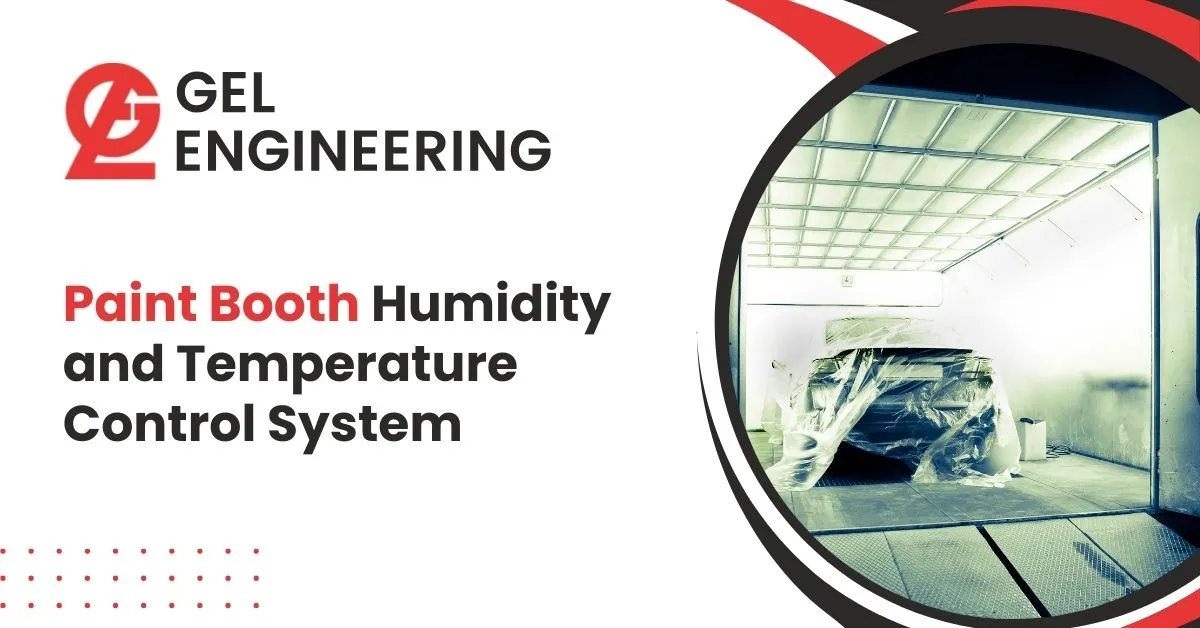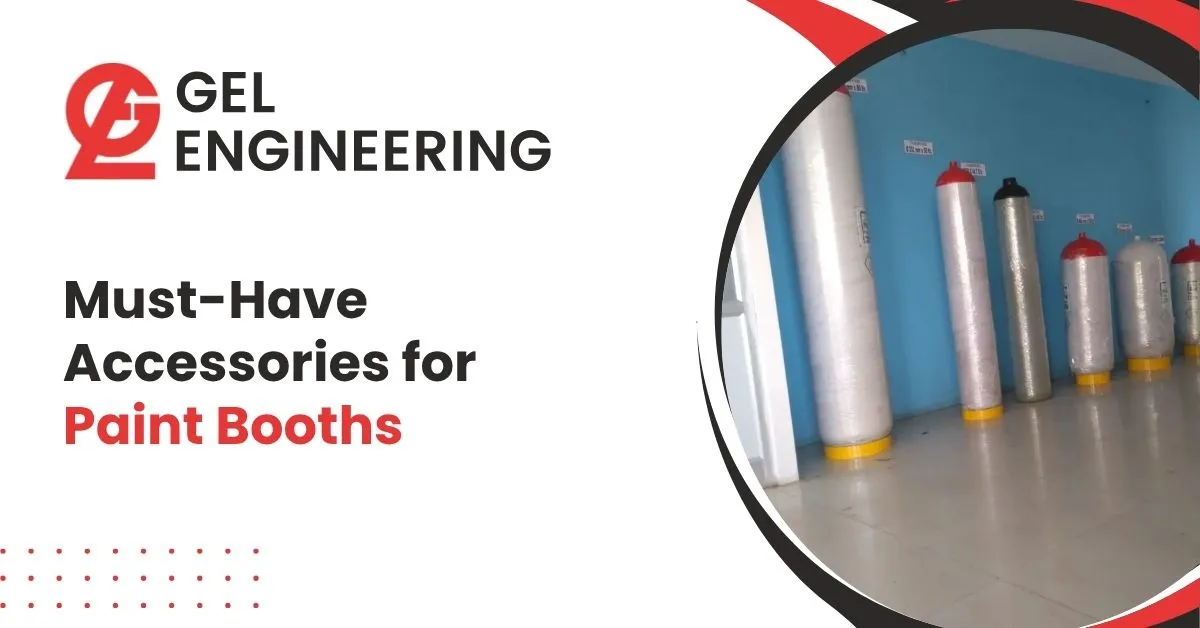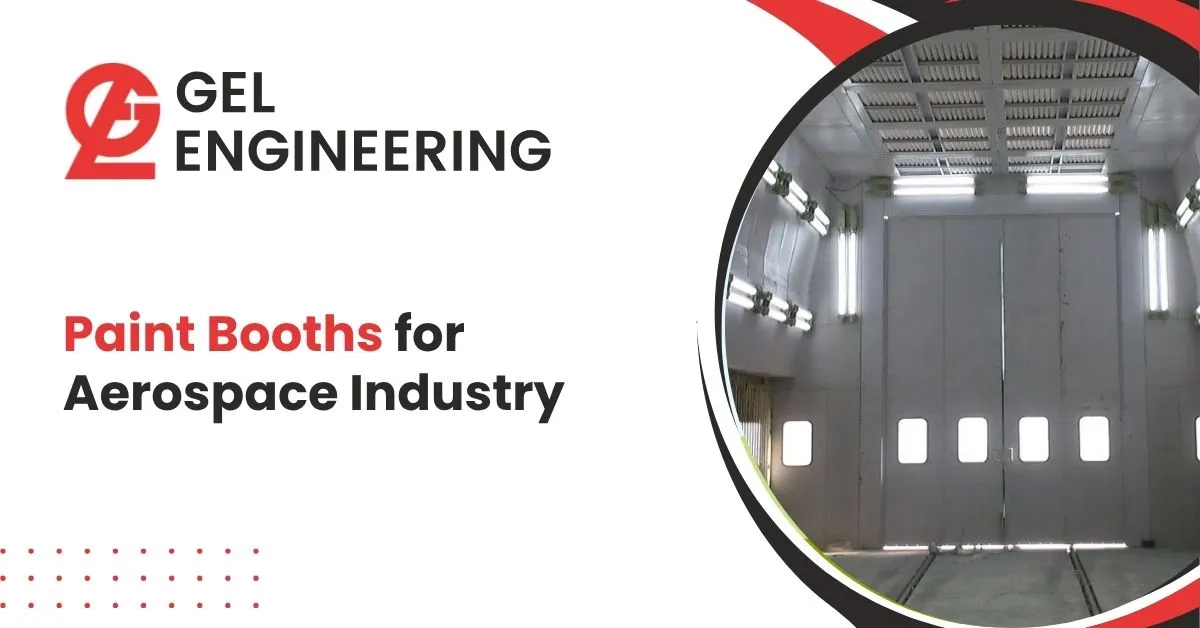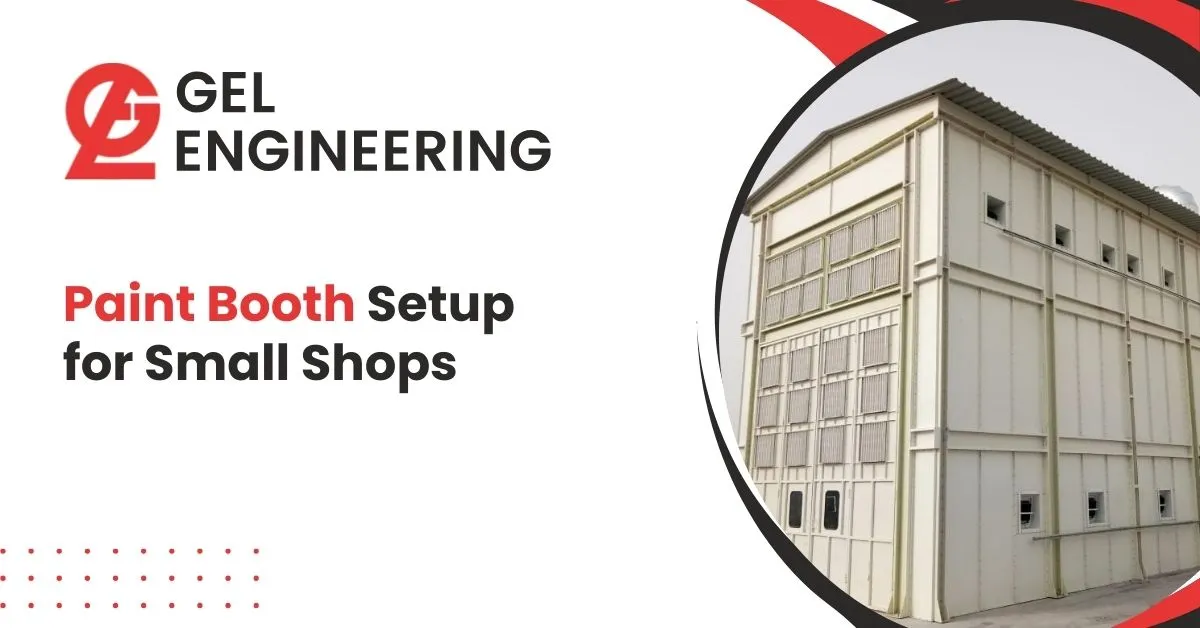Enhance Performance, Safety & Efficiency in Your Spray Painting Process When it comes to industrial…

In paint booths, maintaining precise humidity and temperature levels is essential to ensure optimal coating quality, durability, and consistency. Variations in environmental conditions can significantly impact the appearance, adherence, and curing time of paint. Here’s a look at the importance of controlling humidity and temperature in paint booths and how it improves the painting process.
Table of Contents
Why Temperature and Humidity Matter in Paint Booths
Temperature and humidity directly influence the quality of paint application. Here are the main effects these variables have:
- Paint Consistency and Flow: Paint viscosity changes with temperature fluctuations, affecting how smoothly it applies to surfaces. If it’s too cold, paint thickens, leading to poor application and longer drying times. High temperatures may make paint too thin, causing runs or sagging on vertical surfaces.
- Evaporation Rate and Drying Time: The evaporation rate of solvents in paint is influenced by both temperature and humidity. In dry, warm conditions, solvents evaporate too quickly, which can lead to poor paint adhesion and a dull finish. Conversely, overly humid conditions slow down evaporation, leading to extended drying times and increased susceptibility to dust and particles.
- Adhesion and Finish Quality: When humidity levels are high, moisture can settle on the surface of materials, reducing paint adhesion. This often results in paint defects such as blistering, peeling, or an orange-peel texture. High humidity may also introduce contaminants that cause imperfections in the final coating.
Key Benefits of a Paint Booth Humidity and Temperature Control System
Implementing a dedicated humidity and temperature control system in your paint booth offers several benefits, ensuring high-quality finishes and efficient operations:
- Consistent Finish Quality: By keeping temperature and humidity within the recommended range, you reduce the risk of paint defects and improve the overall finish quality.
- Increased Production Efficiency: Controlling drying times through proper humidity and temperature management allows for faster turnaround times, reducing delays and increasing productivity.
- Reduced Rework and Waste: Proper environmental control minimizes the likelihood of errors, reducing the need for rework, saving materials, and cutting down on waste.
Optimize your paint booth with advanced humidity and temperature control! Contact us today to achieve flawless, consistent finishes in every application.
How Paint Booth Humidity and Temperature Control Systems Work
Humidity and temperature control systems are specialized setups designed to monitor and maintain precise environmental conditions. Here’s how they generally operate:
- Heating and Cooling Components: HVAC systems in the paint booth control temperature by heating or cooling the air as needed. Some systems integrate air conditioning units, while others may use heat exchangers to regulate temperature more precisely.
- Dehumidifiers and Humidifiers: Dehumidifiers are used to remove excess moisture from the air, keeping humidity at ideal levels. Humidifiers can add moisture in dry conditions, ensuring a consistent environment that promotes optimal paint application and curing.
- Airflow Management: Adequate airflow is essential to distribute temperature and humidity evenly throughout the paint booth. Control systems often feature high-efficiency air filters and blowers to circulate air consistently, eliminating hot or cold spots.
- Automated Monitoring and Control: Advanced control systems come equipped with sensors that monitor temperature and humidity in real time. They automatically adjust HVAC settings, dehumidifiers, or humidifiers to maintain set parameters, ensuring a stable environment without manual intervention.
Best Practices for Maintaining Optimal Conditions in Paint Booths
- Regular Calibration and Maintenance: Regularly calibrate temperature and humidity sensors to ensure accuracy. Clean and maintain HVAC and air filtration systems to avoid clogs and inefficiencies.
- Choose the Right Settings for Each Type of Paint: Different paints may require different environmental conditions. Consult product specifications and adjust booth settings to achieve optimal results for each project.
- Maintain Consistent Airflow: Ensure your paint booth is free from obstructions that could affect airflow and verify that air filters are clean and functional.
Frequently Asked Questions
How to control humidity in a paint booth?
Control humidity in a paint booth using dehumidifiers, humidifiers, and automated sensors to maintain consistent moisture levels for optimal paint application.
How do you control humidity and temperature in a paint booth?
Use an integrated HVAC system with humidity and temperature controls, equipped with sensors, dehumidifiers, and precise airflow management to stabilize conditions.
What is the best temperature for a paint booth?
The ideal temperature for a paint booth typically ranges from 68°F to 77°F (20°C to 25°C) to ensure proper paint flow, adhesion, and drying times.
Conclusion
A dedicated humidity and temperature control system is essential for ensuring high-quality results in paint booth applications. With proper environmental control, manufacturers can achieve consistent paint finishes, improved productivity, and reduced rework. Investing in a reliable control system is a practical step toward optimizing operations and delivering superior coating performance.




